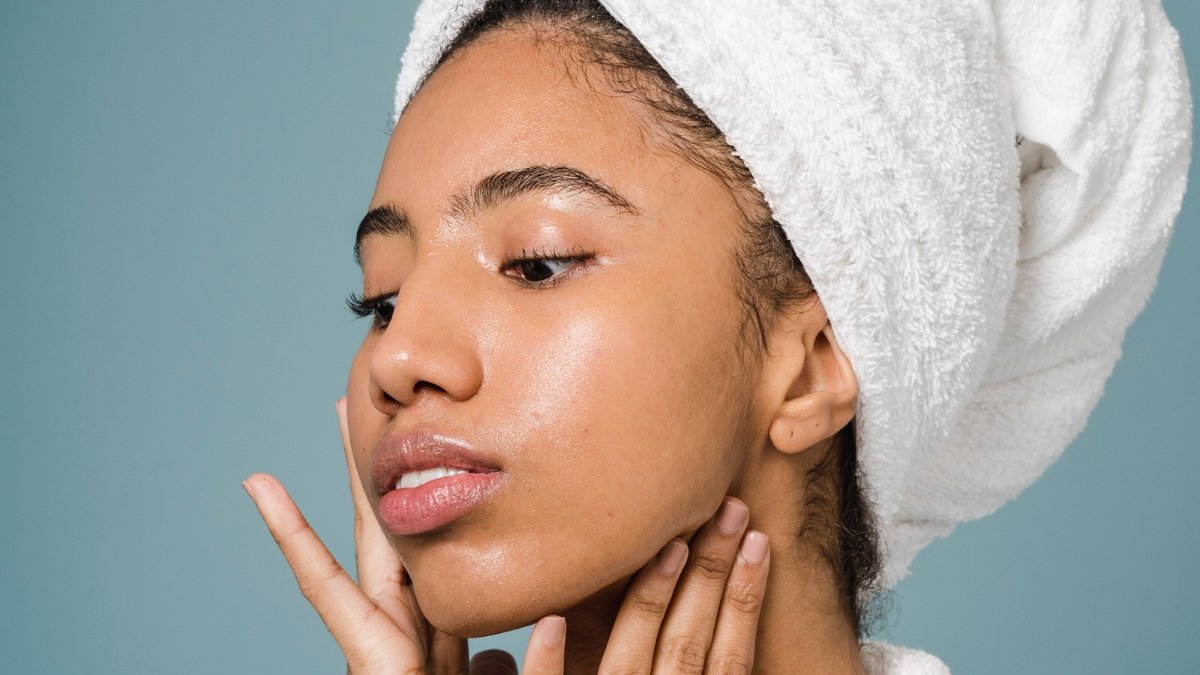
Dark spots, sun spots, uneven skin tone, and melasma. These are the skin woes we as women of color deal with all the time. And they all have one thing in common. They are all related to hyperpigmentation.
Hyperpigmentation happens to be one of the most common and persistent skin concerns in women of color. But don’t worry, we’ve got you! In this post, we’ll cover what causes pigmentation and what can you do about it!
[SEE ALSO: The Best Face Oils to Hydrate Dry Skin]
Why do I have Hyperpigmentation?
Before getting into how to fight uneven skin pigmentation, let’s run through the science for why uneven pigmentation, or hyperpigmentation, even happens in the first place. In normal conditions, melanin is the pigment that is responsible for your beautiful skin tone and it is produced by melanocytes which are skin cells that live in the deepest part of your skin. So, inside melanocytes, there’s an enzyme called tyrosinase that determines how fast melanin (pigment) is produced. Uneven skin tone, melasma, and pigmentation problems are all linked to high activity of the tyrosinase enzyme and therefore melanin production.
However, several external factors can cause some melanocytes to become overly enthusiastic about producing melanin, which ultimately results in uneven skin tone, dark spots, etc. Some of these factors include:
Excessive UV exposure
UV rays from the sun are the leading cause of uneven pigmentation. Because melanin can absorb UVB radiation and reduce DNA lesions, when you get excessive UV exposure, your skin initiates melanin synthesis as a defense mechanism.
Inflammation
Irritation and inflammation are key triggers of hyperpigmentation. Burns, cuts, or other types of injuries to the skin can activate melanin production. In fact, PIH (post-inflammatory hyperpigmentation) can be an unwanted side effect of acne, wounds, or treatments like chemical peels or laser treatments.
Hormones
Changes in hormones can also influence melanogenesis, which is why some women can exhibit melasma during or after pregnancy or menopause.
[READ MORE: The Science Behind the Skin Cycling Trend]
How to tackle unwanted pigmentation?
There are several ways, products, and treatments to try when it comes to reducing pigmentation problems. However, there’s no quick fix, and being consistent with your skincare routine is key. Here are some important factors to take into account:
Prevent external aggressors
The best strategy to prevent melanin production is reducing damage from UV rays and inflammation. A good daily sunscreen with high SPF should be your best friend. Also, antioxidants like vitamin C, resveratrol, silymarin, and lipoid acid are good ingredients to look for in your skincare. They help prevent damage and inflammation within your skin.
Slow down pigment production
Some cosmetic ingredients have been shown to reduce melanin production by inhibiting tyrosinase enzyme activity. Most of them, like azelaic acid, tranexamic acid, arbutin, kojic acid, and licorice root, can be found over the counter in numerous cosmetic products. On the other hand, hydroquinone does the best job of inhibiting melanin production, but it can be quite irritant and you need a prescription to get it.
Make sure you speed up your skin cell turnover
Including chemical exfoliants in your skincare routine is a good option to increase cell turnover, shed old skin, and fade dark spots faster. Glycolic acid or lactic acid are good options if your skin is quite resistant. Mandelic acid and polyhydroxy acids are better options if you have sensitive skin.
[READ MORE: 3 Things To Know Before Buying A Retinoid Serum]
Unwanted hyperpigmentation is usually stubborn and you’ll need to try with several products to solve it. But remember, the best treatment for pigmentation is always prevention!



